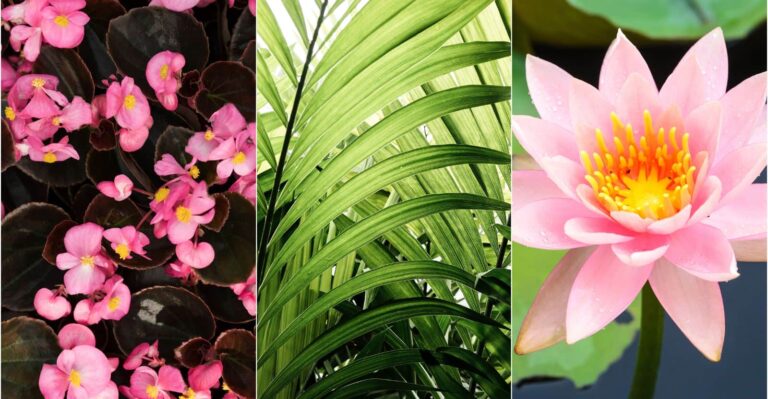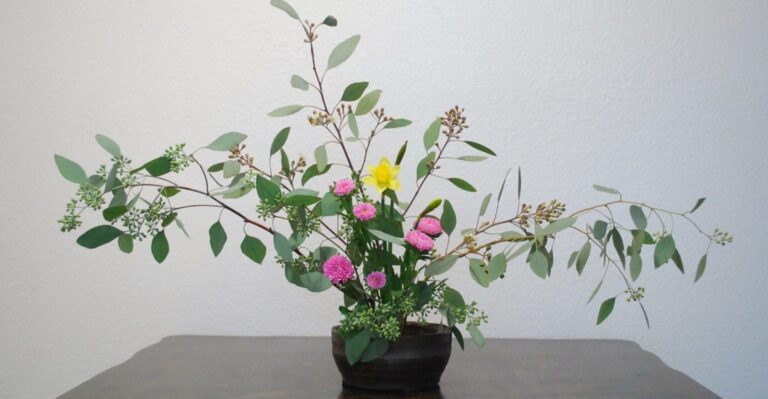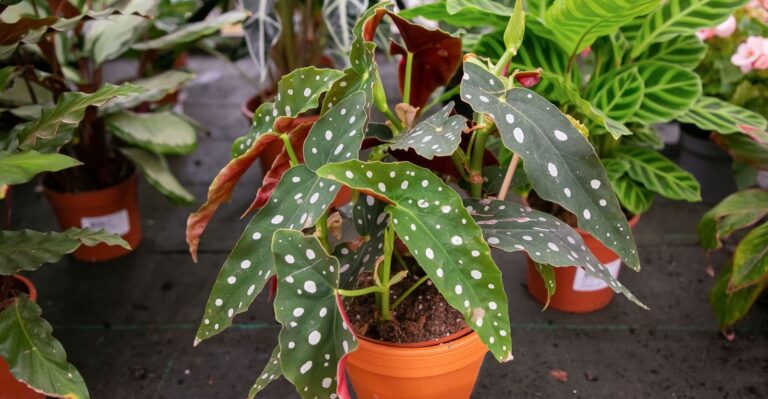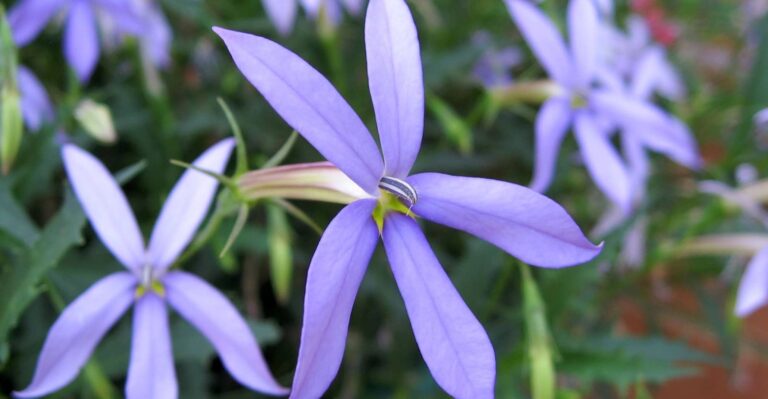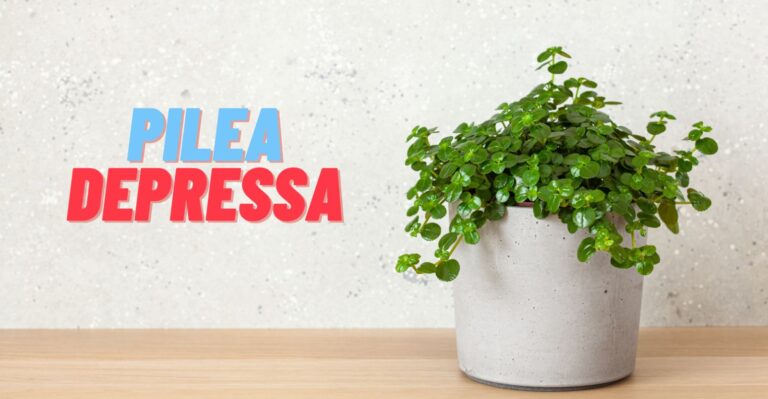Amazon has put together some great Home Gift Deals – save money and get your shopping done at the comfort of your home! Click here to see deals on Amazon
Who doesn’t like dark-green heart-shaped leaves planted in their home? But monstera has so many varieties with a smaller characteristic variance that identifying them often gets confusing.
The main challenge when comparing monstera borsigiana vs. deliciosa is their similar appearance. It’s often hard to differentiate the two when a plant is juvenile since there is no reliable identifying characteristic. So, wait until the plant has grown a bit before you can distinguish it.
What is monstera borsigiana?
Monstera borsigiana is a beautiful plant commonly used in gardening landscape and home decorations. It’s native to Mexico and Central America, also known as the Swiss Cheese Plant. This is a vining plant with aerial roots that climb on other plants and trees.
It has a large, thick stem that can grow several feet tall. The stem has a smooth surface with some wrinkles. The flowers are white or pinkish, and they have a sweet smell. The fenestrations (holes in the leaves) make it quite popular among homeowners.
Their variegated variety, where the leaves have a green and white patch, is coveted among plant lovers. Although it’s a slow bloomer when planted indoors. Monstera borsigiana grows best in the USDA 9–11 zone.
What is the monstera deliciosa?
Monstera deliciosa (also known as the split-leaf philodendron) is an evergreen houseplant that can grow several feet tall. It’s native to Central America and has many names in different countries.
In Costa Rica, it’s called the “tree of life,” and in Mexico, it’s known as “mother nature’s veil.” Many garden centers sell it under the name Monstera deliciosa “wrinkle.”
The glossy and leathery green leaf has large holes that look like a Swiss cheese plant. However, as the plant matures, it starts to lose those attributes.
The monstera deliciosa has many different uses around the home. They’re perfect for indoor decorations because they’re easy to maintain. They can also be used as an outdoor garden on terraces or patios because they can survive in humid environments.

What is the difference between monstera deliciosa and borsigiana?
Monstera deliciosa has a unique appearance with wild green leaves, smooth stems, and hanging vines. Its most commonly found in the lowland tropical rainforests and grows in a warm climate.
It gets the name because of its soft, velvety leaves, which have a delightful aroma. It’s commonly grown as a houseplant all over the world.
Monstera borsigiana resembles a Monstera deliciosa at first glance when they’re small and their leaves haven’t yet been fenestrated. Here are some detailed comparisons between deliciosa and borsigiana.
| Characteristic | Monstera Deliciosa | Monstera Borsigiana |
|---|---|---|
| Leaf Size | Large | Small |
| Growth rate | Slow | Fast |
| Geniciulum | Wrinkled | Smooth |
| Vine Growth | Horizontal spread | Vertical growth |
| Node Spacing | Less spacing | More space |
Deliciosa vs Borsigiana Taxonomy
Taxonomy is the study of the classification of plants. It consists of a hierarchical set of categories for classifying and naming plants.
Interestingly, deliciosa and borsigiana are classified to have the same taxonomy of different classes – indicating very little difference between these two. Both belong to the Araceae family and Monstera Adnas genus.
Deliciosa has larger leaves than Borsigiana
The difference between deliciosa and borsigiana leaves is that the former has larger leaves with a more delicate texture, while the latter has relatively smaller leaves with a rougher texture.
When planted indoors, the deliciosa leaves can grow up to 3 feet (1 meter) or more, whereas borsigiana has smaller leaves that grow up to 1.6 feet (0.5 meters) long. Borsigiana makes it more suitable for smaller homes, apartments, or condos where the space is at a premium.
The leaf size will vary according to the growing conditions, such as water, sunlight, and fertilization. Borsigiana leaves are small with a smooth texture around the petioles. The leaves of deliciosa don’t have any ruffling while they’re growing but start to develop as it matures.
Monstera deliciosa is a slow grower while Borsigiana grows fast
The deliciosa is a tropical plant that can grow up to 40 feet high when growing in a natural environment. The leaves are green and leathery, and its petioles (stem that support the leave) are thick, but this is a slow grower and takes time to reach its full height.
Monstera borsigiana, on the other hand, is a subtropical plant that grows on trees or rocks as vines or as ground-covering plants. They’re fast growers with glossy green leaves and irregularly shaped teeth along their margins.
When planted indoors, deliciosa can grow about 2–3 feet on average, while borsigiana can grow up to 9–10 feet a year. As you can see, borsigiana has 2 to 3 times faster growth habits than deliciosa.

Monstera deliciosa has a wavy geniculum while borsigiana has smooth geniculum
Geniculum is a Latin term that refers to a small twig or shoot that emerges from the trunk of a tree as a sprout. The monstera plant geniculum refers to the round-like parts node where the stem connects to the leaf stalk.
Monstera deliciosa has wavy ridges at the end of its leaf petiole, giving a curvy texture that provides greater movement flexibility for the leaves.
Borsigiana, on the other hand, has geniculum that is smooth and plain without having any texture. The geniculum in both plants is only visible when they have matured and won’t appear on the juvenile plant.
Monstera deliciosa grows taller than borsigiana
Monstera deliciosa grows tall up to 10 feet high and has broad leaves, whereas the borsigiana plant grows up to 5 to 6 feet tall with much smaller leaves. The small size of borsigiana is also known as dwarf borsigiana.
Both plants’ growth will depend on the environment they’re growing. When planted indoors, they won’t grow as tall as when grown outdoors. Both are vining climber plants, and you need to provide support such as a sphagnum moss pole when planting indoors.
Monstera deliciosa spread wider while borsigiana grows vertical
Deliciosa is a horizontal spreading plant with sprawling growth features. They spread more outside, giving a denser and filled appearance to the lawn. In a natural habitat, borsigiana is a relatively straight grower as it retains its climbing characteristic since the start.
The sprawling growth of deliciosa gives a slightly unorganized appearance, while the straight growing borsigiana gives a much neater and organized look.
Monstera deliciosa has shorter nodes than borsigiana
The nodes are the basic internal structure of plants. The vascular tissue, typically found in stems and is responsible for transporting nutrients and water from the roots to the remaining part of the plant, is called the nodes.
Nodes are where the buds, branches, or leaves grow in the plant. In a monstera deliciosa the nodes are close together, whereas in the borsigiana these nodes are farther apart. The more spacing between the nodes in the borsigiana allows it to grow faster and grow like a vine.

How do you care monstera borsigiana and deliciosa?
The monstera is a flowering plant that grows in many climate zones. It’s perfect for people who want to grow a plant with broad leaves, making it an attractive indoor or outdoor garden.
Here is what you need to do to take care of these plants:
Soil
Monstera is a tropical plant that needs moist soil and high humidity. But it can also grow in dry conditions if the soil is amended with organic material like peat moss. You should only water the plant when the top few inches of soil become dry to maintain it properly.
Borsigiana prefers slightly acidic, well-draining soil with a pH range of 5.5 to 6.5. A loamy, nutrient-rich soil containing some organic matter is the best for growth.
Water
Monstera plants require a little bit of water, but not too much. Since it loves the moist soil, water them when the soil is dry to the touch. Watering soil too frequently can cause an increased chance of fungal disease.
The amount of water your monstera plant requires depends on its size, but most plants need about 1 inch of water each week. If the soil feels dry, water it deeply. If the soil is moist, don’t water it.
Light
This tropical plant love light, ideally indirect morning sunlight, although it will tolerate full sun to partial shade. Since it likes shade, it’s best to keep it out of hot direct sunlight.
Be careful that too much light can scorch the leaves, but not enough light could make plants droopy or have no leaf fenestrations. You should aim to provide at least 6 hours of sunlight during the growing season.
You can set them up on a window sill for young plants, but they must stay away from the direct light. Simply put up some shade, so the sun’s rays don’t harm the delicate younger plant or hinder vining growth habit.
If you’re planting in a basement or don’t have enough light in a room, providing some artificial light can also be helpful.
Temperature
To thrive, monstera typically needs warm temperatures between 60ºF to 80ºF (16ºC to 27ºC). Young plants grow best between 75ºF and 80ºF. It’s ideal if you can maintain temperatures around 68ºF (20ºC).
If you live in a warmer region, you might be able to grow monstera outdoors all year. You can grow monstera indoors in a greenhouse, conservatory, or sunny window if you live in a cooler region.
Severe cold, such as temperature less than 45ºF (7ºC), could damage the plant. You should strive to keep it within the operating temperature range. If the temperature falls below 50ºF (10ºC), the plant growth stalls, struggling to survive. When planted in a pot outdoors, you should bring it inside the home.
Fertilization
Monstera plants don’t need a lot of fertilization. This makes them a good choice for many homes and for people who have trouble keeping house plants alive. You can feed it once a month with a nitrogen-rich fertilizer during the spring and summer growing season.
You can use a concentrated or diluted half-strength solution in the growing season. Alternatively, during cold days it needs less nutrients to survive. You can stop the fertilization during fall and winter and restart during the later spring to early summer.
Pruning
Pruning monstera is tricky. They like to be pruned, but don’t overdo it. Cutting off too much can lead to wrinkling and other diseases. You should remove old or damaged leaves that encourage the plant to divert more energy to new growth.
The ideal time to perform pruning is spring through summer, when the plant grows rapidly. You should cut off a one-inch node or so from the main twig. Avoid aggressively canning it since this can harm the main plant.
Repotting
When planted in a container, monstera plants need to be repotted every three years. These plants have aerial roots that grow continuously, and they fill up any container as the plant grows.

The ideal time to repot monstera is in the spring after it starts the new growth. As monstera is a vining plant, you need to provide support when repotting. Moss poles are the best to provide this support as it’s sturdy and looks similar to the natural environment.
When choosing a container for repotting, pick one that is slightly a few inches larger than the plant’s root ball. Be careful not to repot in a large oversize pot as it could result in waterlogging at the bottom that may cause the root rot. Choose a container that has drainage holes at the bottom.
How to propagate monstera borsigiana?
The best way to propagate monstera borsigiana is through cutting or root separation. You can start the propagation process in the spring when you’re doing the pruning. The propagation can be done through mother plant stem cutting and growing in soil, water, or air layering.

They both have their advantage and disadvantage. Growing it in water makes it easy to get started, especially when the plant is developing its roots but may need repotting if you want it to become fully mature.
If you’re growing it from the seed, you should order it from a reputable seller to increase the chance of growth. The seeds should be fresh and healthy. You can soak seeds in lukewarm water for a day and then bury them in a potting mix.
Lightly water the soil to keep it moist but not soggy, and place it in a room where it can get 6–8 hours of indirect sunlight. Typically, the seedling starts in a few weeks. If you’re planning to do propagation from a variegated plant, it often grows a new plant that isn’t variegated.
What are the common problems growing monstera borsigiana?
Growing monstera borsigiana in your home or garden is a labor of love. However, occasionally growing it indoors becomes trickier as the leaves become rough and unattractive. Here are some common problems growing borsigiana.
Yellow leaves: Overwatering causes the mature glossy leaves to turn yellow. You should only water the plant when the top 2–3 inches of soil become dry. Check the light source to ensure it’s getting the required indirect dappled sunlight.
Brown and crispy leaves: Low humidity at home causes the leaves to wilt and dry. You can place a humidifier or place some stones in the pebble tray and keep it moist to increase humidity.
Crispy leaves: Fungal infection to a plant causes the perforated leaves to wilt and get crispy. You should check the plant root for any rotting or fungal infection. You should also not mist plant leaves as it increases the humidity that results in the fungal growth.
Spider mites: This is a common pest to indoor plants, and they’re tiny, soft-bodied gray insects that feed on the undersides of variegated leaves or damage the aerial root.
They prefer to remain on the plant’s surface or leaf base but may crawl under leaves to feed. You can often identify spider mites by looking for white spots on the leaves. You can spray a plant with insecticide for a few weeks to get rid of them.
Is monstera borsigiana toxic to pet?
Monstera borsigiana is a popular indoor plant, but it’s slightly toxic to pets. The toxicity of this plant will depend on the cultivar and its genetic makeup. Some cultivars of this plant can cause skin irritation and allergic reactions in pets.
You should take your pets to a veterinarian if you see them vomiting, drooling, mouth swelling, or having difficulty breathing.
Conclusion
In conclusion, monstera borsigiana is an excellent plant for the home garden. It’s easy to care for and has beautiful foliage. Monstera deliciosa is a bit more expensive than borsigiana thus making borsigiana the most popular plant species among plant lovers. Be sure to give it a try, including albo variegated variety.

Don’t forget to share this post


